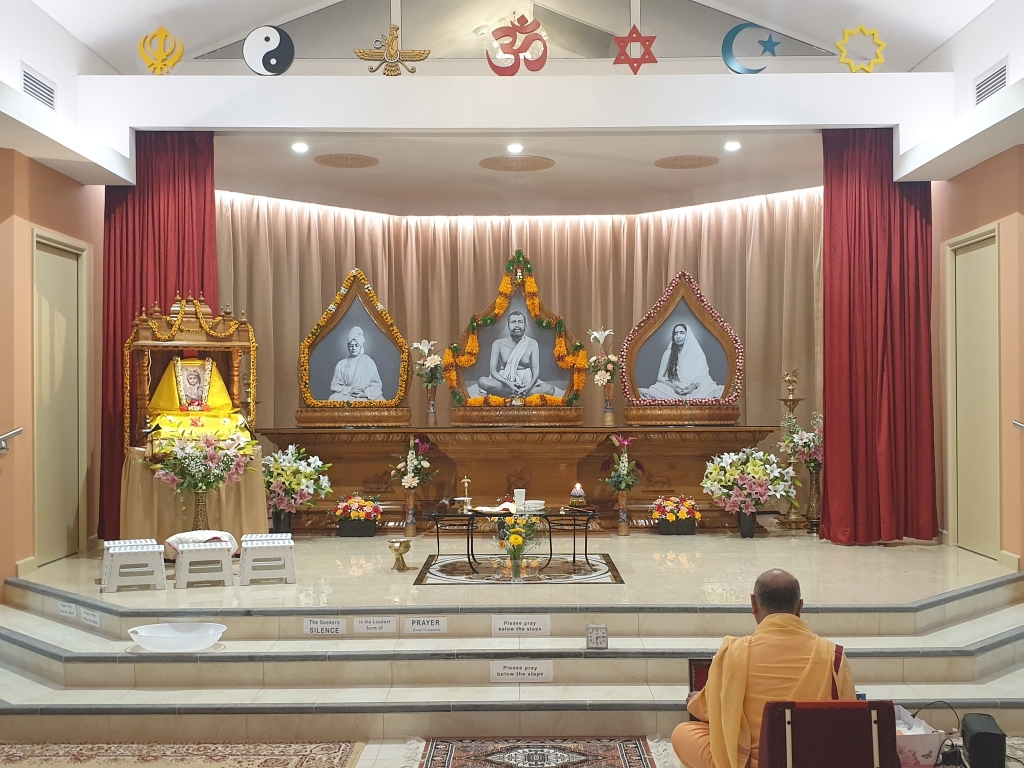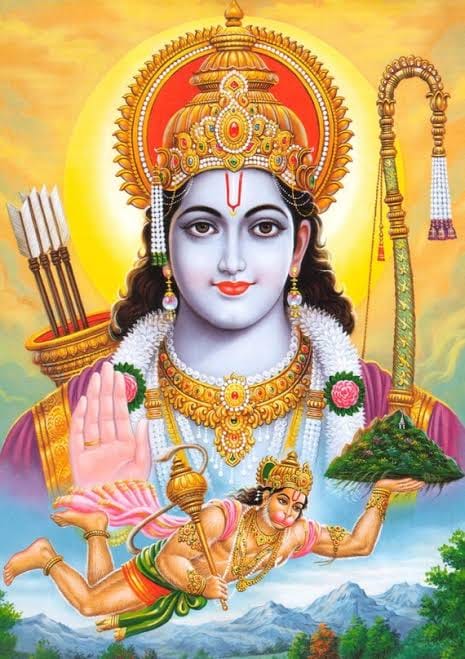Daily Prayers
Arati, vespers and meditation is held at the Shrine daily. All are welcome to attend.
- Morning Arati and Meditation: Everyday 6:30am – 7:15am
- Evening Vesper Service (Aratrikam), Devotional songs and Meditation: Everyday 6.30pm – 7.30pm
Sung prayers are in a variety of languages including Sanskrit, Hindi, Tamil, Bengali & English. Song books in English are provided.

Sri Ramanama Sankirtanam
Ram-Naam Sankirtan or chanting the name of Lord Rama is held on all Ekadasi days after evening Arati.
Observance of Ekadashi:- It is a tradition in Hinduism to fast on Ekadashi days. The fasting are of different types like – without water (nirjala), liquid only, only fruits and/or light refreshment (without rice preparation), taking only one meal, etc. It depends upon one’s health conditions and other factors like nature of work etc. It has got two-fold effect like cleansing the digestive system and building up of will-power.
On this day, Sri Ramanama Sankirtanam is sung in the evening after worshipping Sri Rama. The Ramanam ends with emotive verses addressed to Mahavir, better known to us as Hanuman, the great Messenger of Lord Rama. Swami Vivekananda was never tired of exhorting us to follow the ideal of Mahavir, who stands for selfless service and leonine courage.
This hymn is called Nama Ramayanam in the South. It contains 108 one-line verses, each ending with the name of Ram. Just like the original Ramayana, written by sage Valmiki, this hymn is also divided into 7 cantos namely Bala kanda, Ayodhya kanda, Kishkindha kanda, Sundara kanda, Yuddha kanda and Uttara kanda. Singing of Ramanama Sankirtanam bestows the blessings of Sri Hanuman (or Anjaneya), who delights to hear the name of Lord Ram wherever it is chanted.
Swami Brahmananda, the first President of the Ramakrishna Order, heard the melodious singing of the Sri Ramanam Sankirtanam while he was travelling in South India. On his return to the headquarters at Belur Math, he introduced chanting of this hymn as a regular feature during the Ekadashi prayers in every centre. Later at Varanasi, when this hymn was being chanted, Swami Brahmananda had the darshan of Sri Hanumanji who was present there. From then on, he instructed all centres to have, during chanting of Ramanam Sankirtanam, a separate asana (seat) for Sri Hanumanji and to keep uncut fruits in a plate to be offered.

